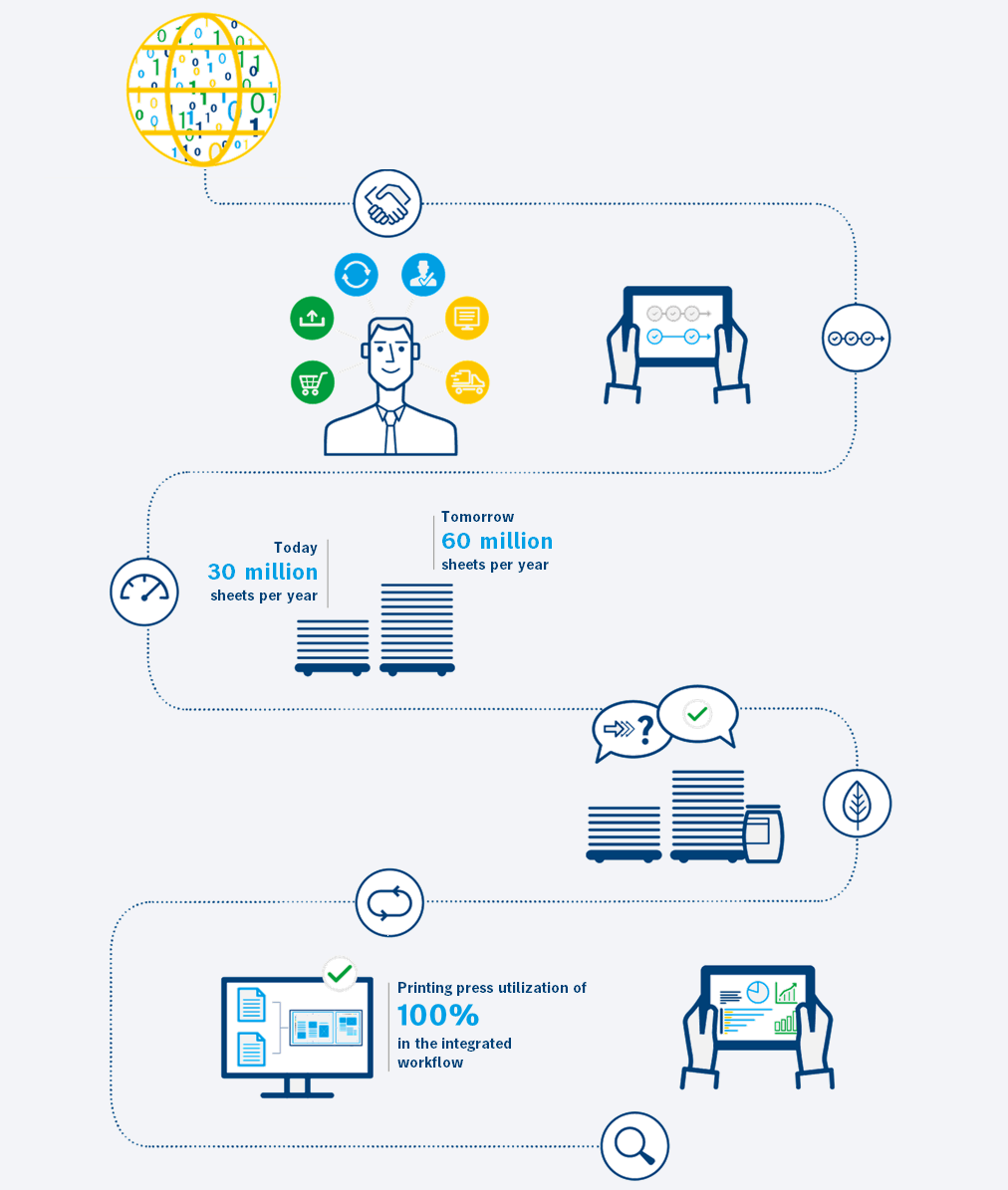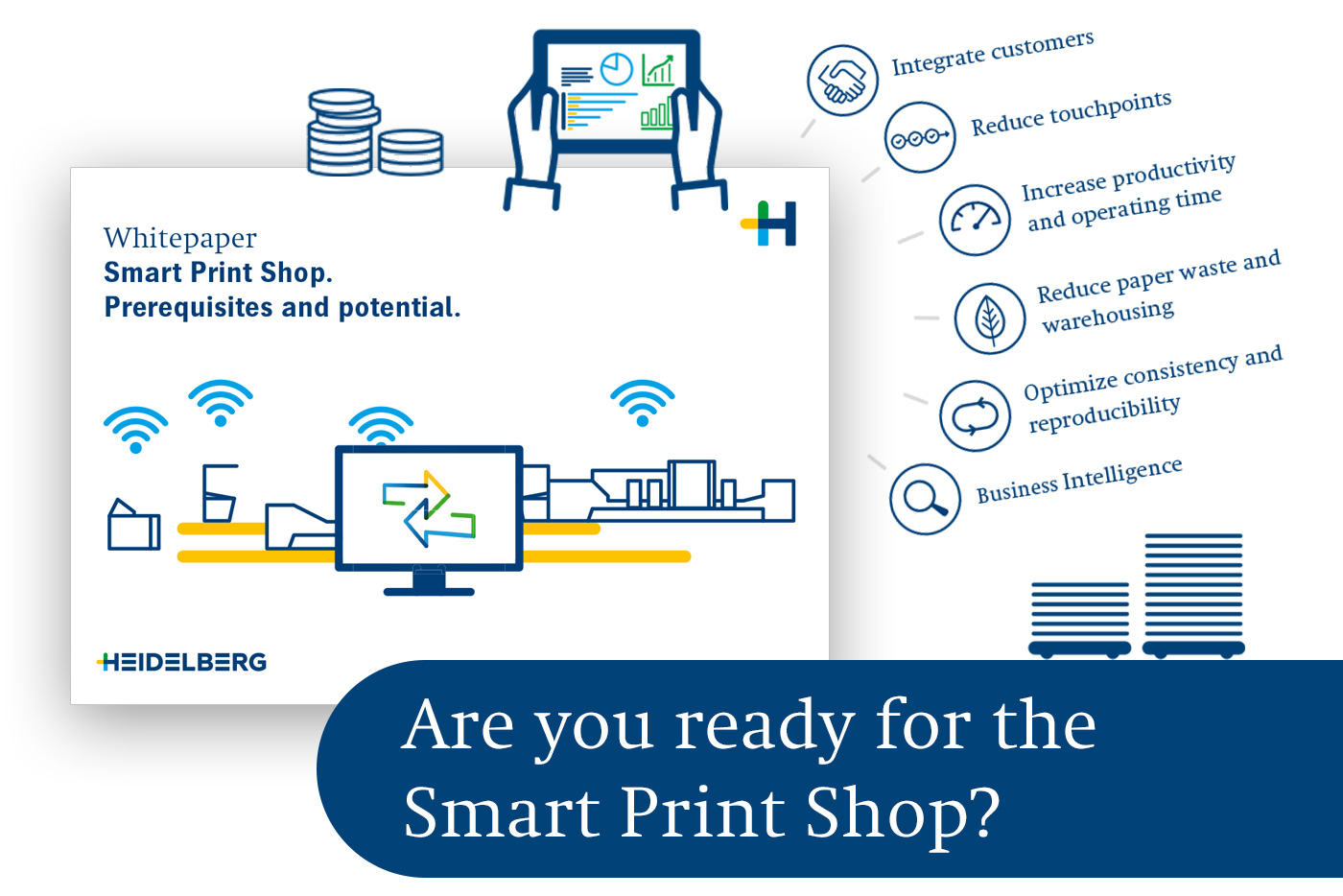
“A printing press is made to print.” In practice, however, only 30 % of its potential is exploited on average*. One reason for this is that the areas upstream of the actual printing process are working at their capacity limit. The crucial factor: these areas account for 55 % of the throughput time of a print job*. The solution to this lies in intelligent machines that organize and process standardized printing processes autonomously. The prerequisite: the harmonious interaction of six key factors.
Integrate customers.
Web portals simplify communication and automate workflows. The result: more efficiency, more customer service, more turnover.
Reduce touchpoints.
Fewer touchpoints and more automation unleash unrealized potential. Throughput increases.
Increase productivity and operating time.
Efficient planning and automatic data availability increase the operating time and productivity. Profits increase.
Reduce paper waste and warehousing.
Optimal materials ensure reproducible production. The paper waste decreases.
Optimize consistency and reproducibility.
Standardization provides certainty and consistency. Production is more predictable.
Business Intelligence.
Business Intelligence delivers sound information. For decision-making based on real facts.
*Heidelberg Research.


What characterizes a smart print shop with the Push to Stop standard? What opportunities exist? What do solutions look like? What are the benefits of optimization? In this whitepaper you will find out:

Prinect makes smart production possible. As a central platform, Prinect seamlessly
integrates all the steps involved in print production into consistent processes. From the
customer contact
through to production, the finished product, and billing.
Whether your company is small or large, whether commercial, packaging or
label printing – Prinect is the right solution.